Calculation of pipe parameters: how to correctly calculate the weight, mass and volume of a pipe
The need to calculate a pipe and accurately determine its specific gravity, total mass and volume arises when laying new communication elements or replacing old ones, during routine repairs or scheduled maintenance of systems, during the construction of private and apartment buildings, public buildings and industrial structures.
The data obtained is entered into the project documentation and makes it possible to draw up an estimate as accurately as possible, indicate the total cost of the upcoming work and determine the number of personnel and equipment capable of completing the task in accordance with the stated deadlines.
Let's figure out together how and why the weight and volume of pipes are calculated.
The content of the article:
Why are pipes designed?
A preliminary detailed calculation of pipes allows you to find out how much material is required to correctly install the selected system and helps to avoid unnecessary waste of money on the purchase, transportation and subsequent installation of parts.
With the right approach, the finished pipeline will work accurately and reliably, and coolant will move in it at the required speed, thus ensuring the most efficient operational output of the entire communication system.
When preparing cost estimates, plumbing system designers recommend taking into account indicators such as:
- basic pipeline permeability;
- level of potential heat loss;
- type, volume and thickness of the required insulation;
- the amount of material that protects pipes from corrosion and other negative external influences;
- the degree of smoothness or roughness of the inner surface of the pipe.
Based on this data, choosing the appropriate type and ordering the required quantity of pipe products will be much faster and easier.
How to correctly calculate parameters in everyday life?
In order to correctly calculate the basic parameters of the pipe rolling planned for use, first of all, determine the type of material and cross-section of the part, external and internal diameter, wall thickness and length of the pipe itself.

Some of the data is obtained quickly and easily by measuring the selected product with a construction tape. More detailed information is provided by accompanying documents, quality certificates issued to the manufacturer by the relevant authorities, profile directories, current GOSTs and open Internet sources.
Calculation methods in industry
At large and large-scale facilities under construction or renovation, the process of determining parameters begins with incoming inspection. Engineers and installers check the accompanying documentation, certificates and company markings applied to the pipe by the manufacturer.
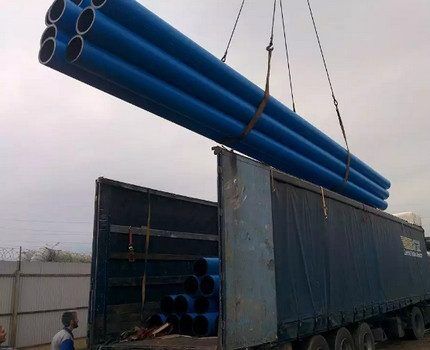
From this data, one finds out the nominal dimensions of the resulting material, the grade of metal or type of plastic, the batch number of the goods, the results of X-ray flaw detection carried out by the manufacturer and the chemical analysis of the smelting, the type of heat treatment and the date of specifications.
In production conditions, the actual length of the pipe is measured using a measuring wire or tape measure. Deviation from the figures stated in the factory documentation, up or down, for first class products is considered acceptable if it does not exceed 15 millimeters, for second class – 100 millimeters.

The outer diameter of pipes used in industry is checked using the formula:
D = L:π-2Δр-0.2 mm
It takes into account such parameters as:
- D – required diameter;
- L – length of the outer circumference of the pipe;
- Δр – thickness of the material from which the tape measure is made;
- 0.2 millimeters is the permissible allowance for contact with the surface of the measuring tool.
Errors and deviations of the actual diameter from those declared by the manufacturer for products with a cross-section of up to 200 millimeters are allowed within 1.5 millimeters. For pipes with a large cross-section, this figure is considered normal if it does not exceed 0.7% of the diameter specified in the documentation.
Determining the diameter of pipe material
To clarify the diameter of the pipe used in the process of repair and installation work, first measure its circumference. An ordinary sewing measuring tape is suitable for this. If you don’t have it at hand, simply wrap the pipe with thick thread, rope or twine, and then apply the fragment to a ruler and find out its length.
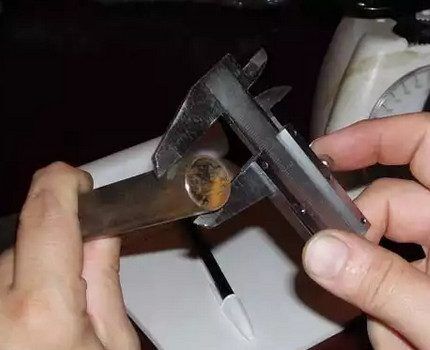
For the purpose of subsequent accurate calculations, use an elementary mathematical formula for determining the circumference:
L=πD
(L - denotes the length of the outer circumference of a circle; π - is a constant number "pi", having the same value in all cases - 3.14 (for the most accurate calculations, up to eight digits after the decimal point are taken into account); D - symbolizes the diameter of the circle circle).
To correctly calculate the outer diameter, transform the equation into the formula D=L/π and perform all the necessary calculations.
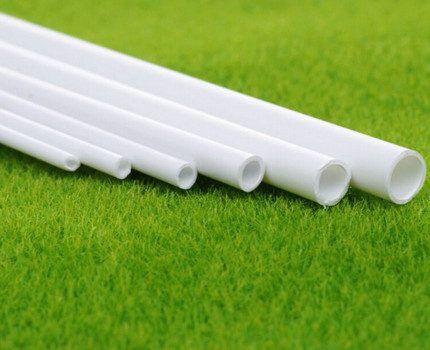
To determine the size of the inner diameter of the circle, first of all, measure the thickness of the walls of the pipe material, and then this value, multiplied by 2, is subtracted from the number that determines the outer diameter of the product.
Measuring parameters in difficult conditions
If the pipe to be measured is difficult to access, use the copying method and apply a suitable measuring tool or an object with already known parameters to the part, for example, a matchbox.
Then the required area is photographed and all other calculations are made based on the image. The obtained values are then converted into real parameters of pipe rolling, taking into account the scale of the survey taken.
Nuances of measuring the diameter of pipes for a heating system
In the process of arranging a heating complex, the diameter of the pipes is determined as correctly and accurately as possible. The subsequent efficiency of the entire system and its ability to produce the required amount of heating will depend on the correctness of this data.
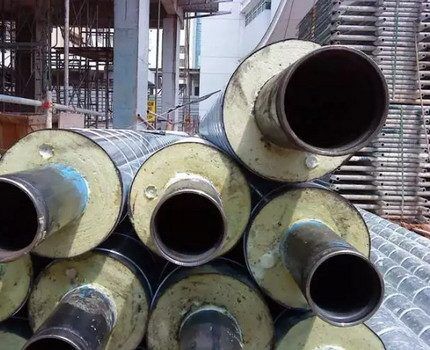
Pipes installed for heating residential or industrial premises are subject to special requirements. They are expected to have high operational stability and the ability to withstand coolant pressure.
When using elements of the wrong diameter, this task becomes extremely difficult. As a result, significant heat loss occurs, and the apartment, house, office or workshop becomes cold and uncomfortable.
Features of calculating pipe volume
Calculating the exact volume of pipe used is a mandatory procedure when installing any communication system. If this step is skipped or treated irresponsibly, too much pressure will build up in the functioning pipeline.
It will accelerate the wear of the material and will lead to the fact that the system will require constant repairs and will eventually simply fail, without even completing the established warranty period.

Low pressure will also have a negative impact, because it will significantly complicate or even make it completely impossible to fully and comfortably operate the system in a mode convenient for the consumer.
General parameters and required calculations
To calculate the volume of a given section of a pipe part, first determine the circumference of the pipe by its outer diameter. They do this using formulas
S=π(D/2)² or S=πR²
In this case, D means a digital indicator of the outer diameter of the pipe, and R is half the outer diameter, that is, the radius. The resulting value is multiplied by the length of the processed fragment and the resulting volume in cubic meters is obtained.
Further necessary calculations are carried out using the formula for calculating the volume of a cylinder
V=SH
where V is the volume of the pipe expressed in cubic meters, S is the external cross-sectional area expressed in square meters, and H is the length of the pipe section expressed in meters. For the correctness of actions, first all units of measurement are converted into a single vector and only after that the necessary calculations are carried out.
Calculation of the volume of pipes for water and gas supply
Correct calculation of the volume of steel pipes intended for communications responsible for water and gas supply begins with determining the diameter. The most popular models are reinforced pipes with a base diameter of 25.5 millimeters and ordinary universal ones with a diameter of 27.1 millimeters.
According to professionals, when laying a simple system, the accuracy of the indicators is not very important, since the volume of the pipe is calculated using generally established dimensionless indicators called nominal bore. The digital value of these values is determined using special tables and only in the case when it is necessary to calculate the pressure.
If you plan to use antifreeze, try to make the calculations more accurately. This allows you to avoid unnecessary material costs and significantly reduces the overall costs of laying communications.

Next, calculate the radius of the part. To do this, use the formula:
R=D/2
they enter the data contained in the accompanying documentation or in the pipe markings (D means the base diameter declared by the manufacturer), and then, using the obtained figures, they perform the necessary computational actions.
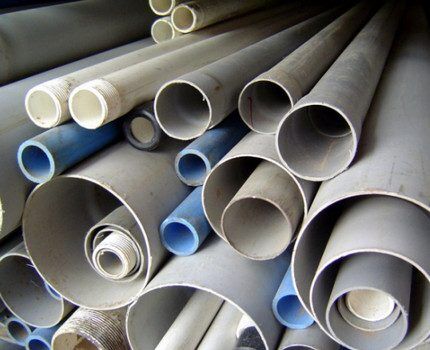
At the next stage, the cross-sectional area is found. To do this, the numerical value of the radius is squared and multiplied again by the number PI (3.14). If the radius of the part is expressed in millimeters, the cross-sectional area is calculated in square millimeters. At the end, all the obtained values are put into the formula V=SH and the desired number is obtained.
We also recommend reading a more detailed article on how to correctly calculate the volume of pipes. More details - go to link.
Rules for calculating the weight of a pipe part
At first glance, calculating the weight of a linear meter of pipe is not difficult. It is enough to look at the product labeling, check the relevant reference materials (certification certificates, accompanying documentation, approved GOSTs, etc.) and get all the necessary data from there.
You can use a specially designed online program, enter the information you have on hand into it, and within 1-2 minutes see accurate results on your computer monitor, tablet screen, or phone display.
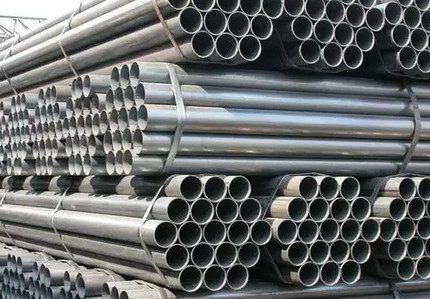
But sometimes there are no reference books at hand and the ability to use virtual resources is also missing. But there is pipe material made of metal or plastic, urgently requiring determination of its actual mass.
And the calculation procedure here is very important, since many types of products are sold by weight, and heavier ones often differ significantly in cost from lighter ones.
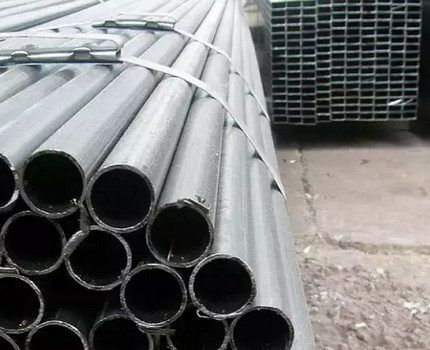
In addition, accurate weight data helps determine the strength of the structure being built and allows you to find out what level of operational load it will be able to withstand in the future.
Also, information on weight parameters is necessary to select a vehicle capable of delivering material to a repair or construction site and to determine the amount of labor and construction equipment required for loading/unloading and subsequent installation of elements into the overall system.
Determining the weight of a round pipe
How much a piece of pipe material with a round cross-section weighs is determined based on the outer diameter of the product, wall thickness, specific density of the material and the total length of the segment in linear meters.
The calculation algorithm is described by the formula:
M = π * Ro * s * (D – s) * L
The alphabetic characters represent the following parameters:
- M is the required mass of the pipe under study;
- Πi is a constant value equal to 3.14, relevant for calculating the area of a circle;
- Ro is the specific gravity of the material from which the product is made (for metals it is indicated as density in kilograms per cubic meter);
- S – pipe wall thickness;
- D – size of the outer diameter of the pipe circumference;
- L – product length.
Having made all the necessary calculations and found out how much one linear meter weighs, the resulting value is multiplied by the total number of purchased linear meters of pipe rolling.
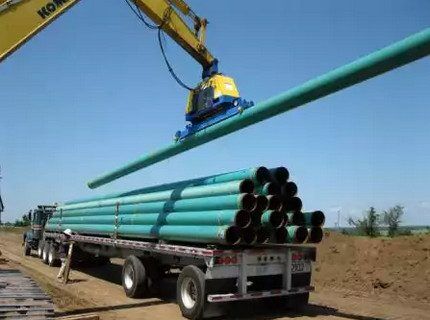
In this way, data is obtained on the relative total weight of the products necessary for laying a communication system or constructing any buildings.
How to calculate the mass of profile pipes?
All equations, algorithms and formulas presented above are relevant only for rolled pipes with a round cross-section. It is the most common and more widely used than all other options for industrial and domestic purposes.
However, there are situations when it becomes necessary to calculate the mass of products with an oval, rectangular, square, trapezoidal or some other non-standard type of section.

The weight of pipe parts with a non-standard cross-section is calculated using several simple formulas. The mass of a square pipe can be found by the equation:
M = (Ro) * 0.0157 * s * (A * 2 – 2.86 * s) * L,
where alphanumeric characters mean the following:
- Ro – specific gravity (density) of the material;
- 0.0157 – constant calculated value;
- S – wall thickness;
- 2.86 is a constant value calculated based on the corner radius;
- L – pipe length, indicated in linear meters.
For a rectangular pipe part, the following equation is relevant:
M = (Ro / 7850) * 0.0157 * s * (A + B – 2.86 * s) * L,
where, in addition to all the data described above, the values of A and B are taken into account, symbolizing the length of the sides. More information about the types of steel pipes with different sections can be read in this material.
Conclusions and useful video on the topic
Lifehacks, useful tips and visual recommendations on how to quickly, easily and effortlessly measure the diameter of the required pipe. The methods are applicable to parts of any size, made of various materials:
Rules for calculating the volume of pipes in cubic meters using mathematical formulas. Detailed description of all actions in step-by-step mode:
Tips for home craftsmen on how to correctly calculate the mass of one meter of round and profile pipe. Detailed recommendations for using thematic tables, formulas and online calculators:
Based on the information presented above, we can say that independently calculating the weight, volume, diameter, mass and cross-section of pipes made of various materials is not so difficult.
Of course, the task requires attention, scrupulousness, accuracy and takes some time. But all the efforts pay off handsomely in the very near future. The communication system, formed according to the most precise parameters, works absolutely clearly and ensures effective operational returns.
If there are any doubts left, and there is no absolute confidence in the ability to independently carry out accurate calculations, it is appropriate to entrust this issue to the designers. They will do everything quickly and provide the customer with a complete costing breakdown of all required parameters.
We hope that the material presented above helped you with the calculations of pipes made of various materials. If you have any questions, you can ask them in the block below, and we will try to answer them promptly.



